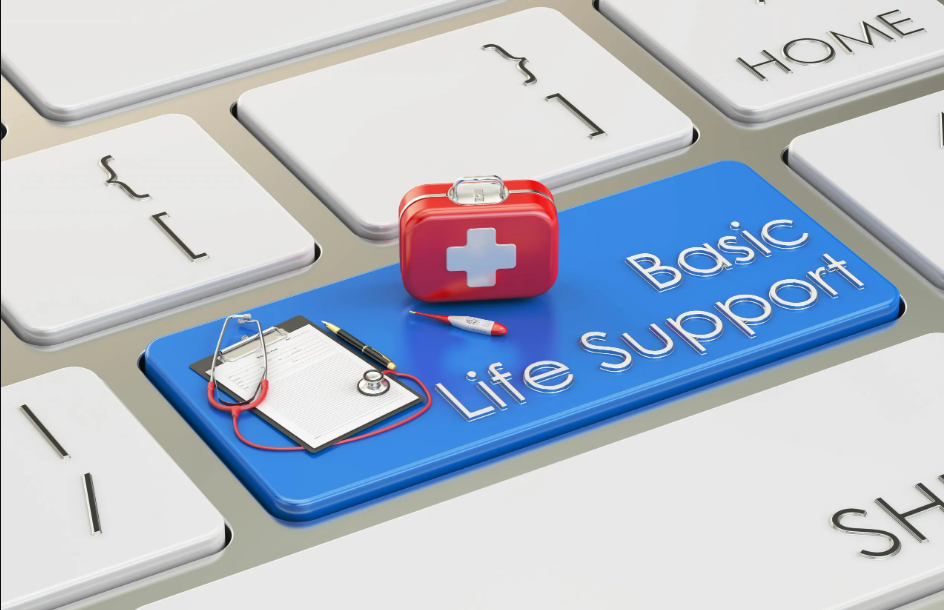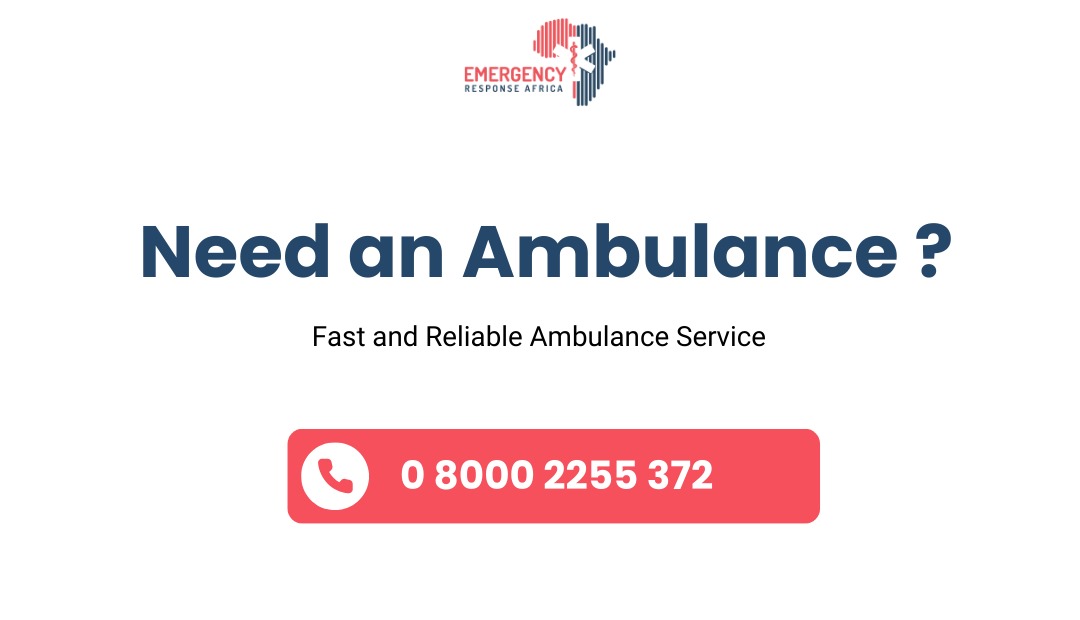Are you a Nigerian or living in Nigeria and don’t know how to perform Basic Life Support (BLS)? If so, you’re not doing yourself or those around you any favors. We all know that emergency care can sometimes be delayed in Nigeria, and knowing how to perform this life-saving technique could be the difference between life and death, especially in such situations.
This guide will explain how to perform BLS in simple steps, focusing on what to do when someone collapses or stops breathing.
What is BLS?
Basic Life Support (BLS) is a set of simple but important steps to help save someone’s life in an emergency, like when they stop breathing or their heart stops beating. BLS can be performed by anyone, not just doctors, as long as they are trained.
In Nigeria, it’s helpful to know how to perform BLS, especially in busy places like markets, schools, and churches where medical help might not be immediately available. Now that we understand what BLS is, let’s dive into the steps on how to perform BLS in Nigeria.

How to Perform BLS
Follow the steps below to learn how to perform BLS in Nigeria;
1. Check the Scene and Make It Safe
Before helping, make sure the area is safe for you, the person who needs help, and others nearby. Look around to check for anything that might be dangerous, like fire, broken glass, or vehicles moving. If there is a risk, try to remove the person from danger if possible.
For example, if someone collapses in a busy street, ask people to stop traffic so you can safely attend to the victim. Always remember that you should protect yourself first.
2. Check for a Response
Once the area is safe, go to the person and check if they are responsive. You can gently shake their shoulders and know if they are conscious or not.
This step is important because if the person responds, they might not need CPR but still need medical help. If they don’t respond, continue with the next steps.
3. Call for Help
If the person is unresponsive and not breathing normally, immediately call for emergency help. In Nigeria, you can dial emergency numbers like 112 or 199 or Emergency Response Africa (ERA) to request an ambulance. If there is someone with you, ask them to call while you begin helping the person. If you are alone, make the call quickly before starting CPR.
4. Open the Airway
After confirming the person is unresponsive, the next step is to open their airway. This is important because an open airway allows oxygen to reach the lungs. To do this:
- Gently tilt the person’s head back by placing one hand on their forehead.
- Use the fingertips of your other hand to lift their chin upward.
This movement lifts the tongue away from the back of the throat, making it easier for air to flow in.
5. Check for Breathing
Once the airway is open, check if the person is breathing normally. You can:
- Look at their chest to see if it rises and falls.
- Listen for any sound of breathing by putting your ear close to your mouth.
- Feel for their breath on your cheek.
Take no more than 10 seconds for this step. If the person is breathing normally, put them in the recovery position (explained later). But if they are not breathing or are only gasping, move to the next step.
6. Start Chest Compressions (CPR)
Chest compressions help pump blood around the body when the heart is not working. To perform chest compressions:
- Kneel beside the person.
- Place the heel of one hand on the center of the chest, just below the nipples.
- Place your other hand on top of the first, interlocking your fingers.
- Keep your arms straight, and position yourself directly over the chest.
- Push down hard and fast, at least 5 cm deep, at a rate of 100 to 120 compressions per minute. Allow the chest to rise back up fully after each push but don’t remove your hands.
Continue compressions until help arrives or the person starts to show signs of recovery, like moving or breathing normally.
7. Give Rescue Breaths (If Trained)
If you are trained to do so, after 30 chest compressions, give two rescue breaths. This helps to get oxygen into the lungs. Follow these steps for rescue breaths:
- After the 30 compressions, tilt the head back and lift the chin as before.
- Pinch the person’s nose closed with your fingers.
- Take a normal breath and seal your mouth over theirs.
- Blow steadily into their mouth for about 1 second, watching to see if their chest rises.
- If the chest rises, it means the breath went in. If not, try repositioning the head and give it another breath.
- Give two breaths in total, then return to compressions.
Keep repeating the cycle of 30 compressions and 2 breaths until help arrives.
If you are not trained or are uncomfortable giving rescue breaths, you can perform compression-only CPR, which means you only do chest compressions without the breaths. This method is still very effective in helping the person survive.
8. Using an Automated External Defibrillator (AED)
An AED is a device that can deliver a shock to restart a person’s heart. If one is available (like in a large office or airport), use it as soon as possible. The AED is very easy to use, and it will guide you with voice instructions. Here’s how to use it:
- Turn on the AED and follow its instructions.
- Attach the sticky pads to the person’s bare chest as shown in the AED instructions.
- The AED will analyze the person’s heart and tell you if a shock is needed.
- If a shock is advised, make sure no one is touching the person, then press the button to deliver the shock.
- After the shock, continue CPR immediately.
AEDs are not yet widely available in Nigeria, but more public places are beginning to install them.
9. Place in the Recovery Position (If Breathing)
If the person starts breathing normally but is still unconscious, put them in the recovery position. This keeps the airway open and prevents choking if they vomit. To do this:
- Gently roll the person onto their side.
- Bend the top leg so it forms a 90-degree angle.
- Tilt their head back slightly to keep the airway open.
Stay with the person until medical help arrives, and be ready to start CPR again if they stop breathing.
10. Continue CPR Until Help Arrives
Once you start CPR, do not stop unless:
- A medical professional takes over.
- The person starts breathing normally or shows signs of life.
- You become too exhausted to continue.
In many cases, it takes time for emergency services to arrive, especially in areas far from major cities in Nigeria. Keep doing CPR, even if you think it’s not working – every compression increases the person’s chance of survival.
RELATED SERVICES:
How Do You Perform BLS in Different Emergency Situations?
In Nigeria, you may face different situations where BLS is needed, like road accidents, drowning, or choking. Here’s what to do in these specific cases:
- Road Accident: Make sure the area is safe before helping. If the person is unconscious, follow the BLS steps. Be careful if you think they might have a neck injury; avoid moving their head or neck more than necessary.
- Drowning: After pulling someone out of the water, start CPR immediately. Give rescue breaths as soon as possible because they will need oxygen.
- Choking: If someone is choking but still conscious, perform the Heimlich maneuver by standing behind them and pressing on their abdomen just above the belly button to force the object out. If they lose consciousness, start CPR.
Do we Check Pulse in BLS?
In Basic Life Support (BLS), rescuers no longer check for a pulse before starting chest compressions. The focus is on quick action, especially if someone is unresponsive and not breathing. Checking for a pulse can take too long and delay life-saving care.
However, if a healthcare provider does check for a pulse in an unresponsive child, they must be sure it’s there to avoid unnecessary CPR. The main goal is to start chest compressions and rescue breaths quickly to restore breathing and circulation.
RELATED SERVICES:
What is the Difference Between BLS and CPR?
BLS (Basic Life Support) is a broader certification meant for healthcare workers and first responders. It includes CPR (Cardiopulmonary Resuscitation) but also covers additional techniques for dealing with cardiac arrest, breathing problems, and blocked airways.
While CPR focuses mainly on chest compressions and rescue breaths for someone who has stopped breathing or has no pulse, BLS teaches more advanced skills and methods to handle various emergencies effectively.
BLS ensures that responders are prepared to offer comprehensive care in emergencies, going beyond the basics of CPR.
Conclusion
Basic Life Support is not yet common knowledge in Nigeria, but more people should learn it. Training is available through organizations like the Emergency Response Africa (ERA).
These training programs are designed to help people understand the techniques of CPR, using an AED, and handling emergencies like choking or drowning. Many hospitals and health centers also offer short courses in BLS.
Learning and performing BLS can save lives, especially in emergencies where immediate medical help might not be available. By knowing the steps of BLS – checking for safety, calling for help, starting chest compressions, and giving rescue breaths – you can provide critical support to someone in need.




